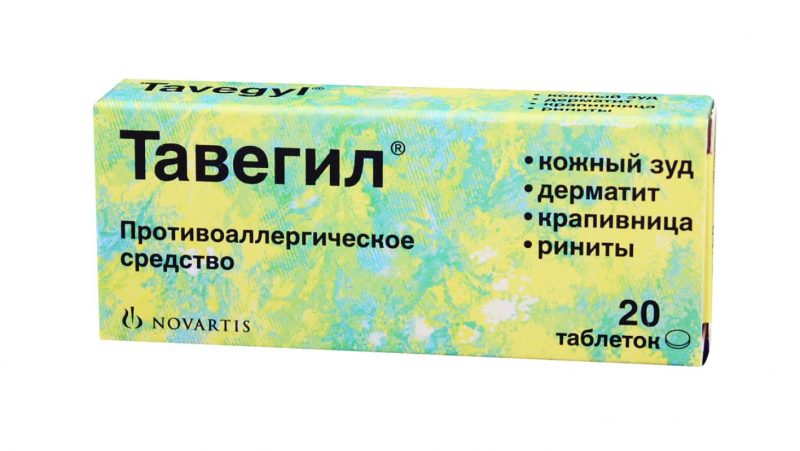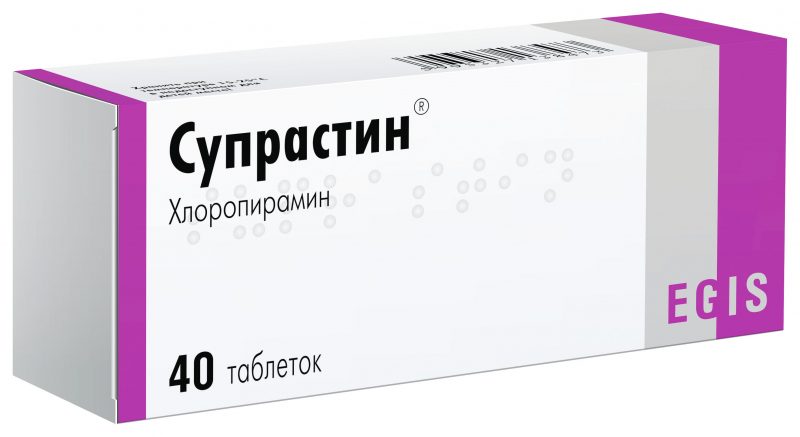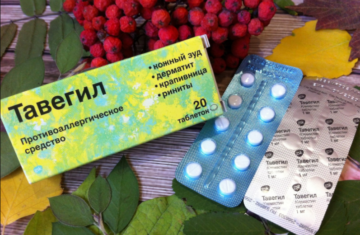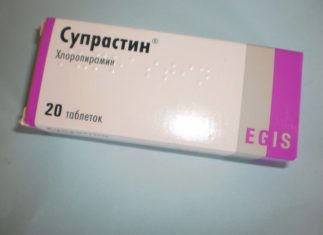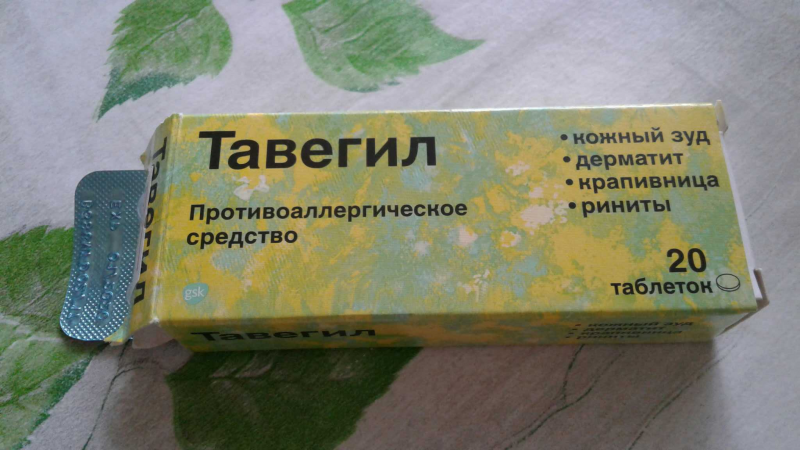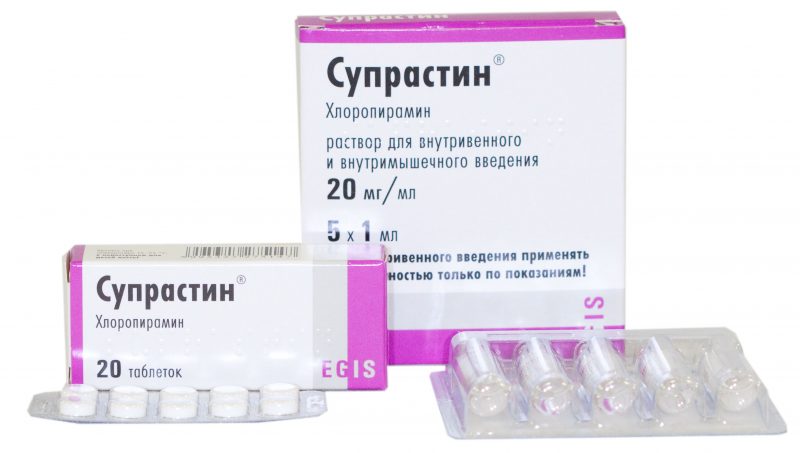Although both drugs are included in the 1st generation group of antiallergic drugs, you should deal with a frequently asked question - Tavegil or Suprastin, which is better for different forms of allergic manifestations.
Despite the emergence of new antihistamine pharmaceuticals, the first developed drugs are still widely used in the treatment of patients of different ages. What is similar between these pharmacological products?
Material Content:
Suprastin or Tavegil - which is better for allergies
Both Suprastin and Tavegil are distinguished by pronounced antiallergic effectiveness and the ability to quickly remove the main symptoms of the pathology. These drugs, like other antihistamine medications, do not affect the cause of the allergy itself.
At the initial manifestations of the disease, experts very often prescribe one of these two medicines because of their properties to relieve itching, reduce the severity of skin rashes, swelling with insect bites, nettle blisters, lacrimation and itching of the eye mucosa, sneezing and copious nasal discharge.
A characteristic valuable quality of Suprastin and Tavegil is the ability to use them in injection solutions. They show a high therapeutic result in life-threatening situations - the development of Quincke edema, including laryngeal edema in young children, and anaphylactic reactions that occur immediately.
The therapeutic effect when using both medicines occurs within 15 to 30 minutes, with maximum severity - after 1.5 - 2 hours after application.
Both drugs can be purchased without a prescription.
And yet, despite the many coincidences, there are differences between the drugs, so only a specialist is able to choose which one should be taken by the patient depending on the age, severity of the disease, especially allergic manifestations.
Comparison table of drugs
The table shows those characteristics of drugs that have differences.
| Comparative Parameters | Suprastin | Tavegil |
|---|---|---|
| Cure | Chloropyramine | Clemastine |
| Duration of therapeutic effect | Up to 7 hours | Till 12 o'clock |
| Sedative effect | Causing drowsiness | Soothes, but does not lead to severe drowsiness |
| Age restrictions | Causes drowsiness. Allowed infants from the fifth week of life. | It can be used only from 12 months in syrup and injection, and only from 6 years in tablets |
| Release form | Only tablets and injection | Tablets, injection solution, syrup |
| Prevalence | Only in the Russian Federation | Widely distributed in Europe and Russia |
Thus, both agents show high therapeutic results in eliminating the symptoms of allergic pathologies.
When choosing a medicine, the following differences are considered:
- Tavegil for allergies in the form of tablets and syrup is often prescribed for long-term illnesses, since its effect is longer and takes 4 to 5 hours longer than that of Suprastin.
- But Suprastin for allergies can be used in infants after the neonatal period (from 1 month), and clemastine in Tavegil - only from a year old.
- The patient receiving chloropyramine feels severe drowsiness, and with Tavegil therapy such a pronounced effect of sedation is not observed, therefore it is more often prescribed to people who continue to study, work and drive vehicles during treatment.
- Tavegil has an additional dosage form - syrup, which is convenient in the treatment of young patients.
- Suprastin is cheaper than Tavegil, but it has to be taken more often due to the shorter therapeutic effect.
Ultimately, it is better to entrust the choice of medication to the attending specialist, who will take into account all the specifics of its use.
Composition (active substance), indications for use
The therapeutic basis of Suprastin is chloropyramine in the form of hydrochloride, and in Tavegil, the pharmacologically active substance is clemastine.
Both drugs are widely used to relieve allergic manifestations (itching, swelling, irritation, lacrimation, sneezing) in the following pathological conditions:
- dermatitis (atopic, contact) and other itchy dermatoses;
- acute rhinitis of an allergic origin, including seasonal,
- year-round allergic rhinitis;
- allergic rhinoconjunctivitis;
- itching with chickenpox in young children and infants;
- blisters, itchy rash, swelling and redness with hives;
- weeping eczema (with the help of the drug dry the weeping elements on the skin, prevent the formation of edema);
- toxic-allergic dermatitis (when ingested medical devices and toxins), drug exanthema;
- insect bites, accompanied by swelling of the skin and fiber, redness, painful itching, poisoning from the poison produced by the bite;
- acute allergy after vaccination (as a prophylactic before and after vaccination, for example, Mantoux, DTP).
Medicinal solutions of Tavegil and Suprastin are considered as one of the indispensable means of emergency assistance for development:
- angioedema, especially laryngeal edema in babies up to 3 to 4 years, which can quickly lead to the death of the child;
- acute anaphylactic reaction, life-threatening.
The use of injections in such acute allergic-inflammatory conditions can quickly alleviate the symptoms and prevent or suppress the development of anaphylaxis.
It should be noted that both medicines show excellent results in the treatment of not only allergic, but also infectious and inflammatory diseases of the oropharynx or the development of acute respiratory viral infections, acute respiratory infections in patients with allergic rhinitis.
Both drugs reduce the amount of mucus secreted from the nose, reduce swelling of the nasal mucosa and throat, making breathing easier.
Due to the additional sedative (in Suprastin) and soothing effect (in Tavegil), the condition of patients improves significantly with excruciating itching, as the drugs eliminate sleep disorders and increased nervous irritability in children.
In addition, medications are prescribed prophylactically to prevent allergic and false allergic manifestations before blood transfusion, procedures using radiopaque substances, and samples with the introduction of histamine into the blood.
Contraindications and side effects
Contraindications for both drugs are similar, these are:
- intolerance to any of the medicinal components;
- period of pregnancy and lactation;
- inflammatory and allergic pathologies of the bronchi and lungs, including an attack of bronchial asthma;
- MAO reception;
- fructose and lactose intolerance, lactase deficiency, impaired absorption of glucose, galactose (for tablets).
Tavegil in any form is contraindicated in infants up to a year, and in tablets - up to 6 years.
Adverse reactions are largely identical, but doctors believe that although Tavegil’s list is wider than Suprastin’s side effects are less common.
Among the common ones:
- lethargy, drowsiness, weakness, dry mucous membranes, nausea, loose stools, constipation;
- skin rashes, itching;
- rarely - lowering blood pressure, heart rhythm disturbance, urinary retention;
- very rarely in children - paradoxical irritability, tearfulness, sleep disturbance.
Additionally, clemastine in rare cases (usually with an overdose) can provoke convulsions, neuritis, numbness of the skin on the extremities, psycho-emotional instability, visual and auditory disorders, shortness of breath, nasal congestion.
Price comparison of drugs
The antiallergic drug Tavegil is 40% more expensive than Suprastin.
However, a pack of Tavegil with 20 tablets of 1 mg is enough for 10 days of therapy (at the rate of 2 tablets per day for adults), and a pack of Suprastin with the same number of tablets for 5 to 6 days (at the rate of 3-4 tablets per day).


